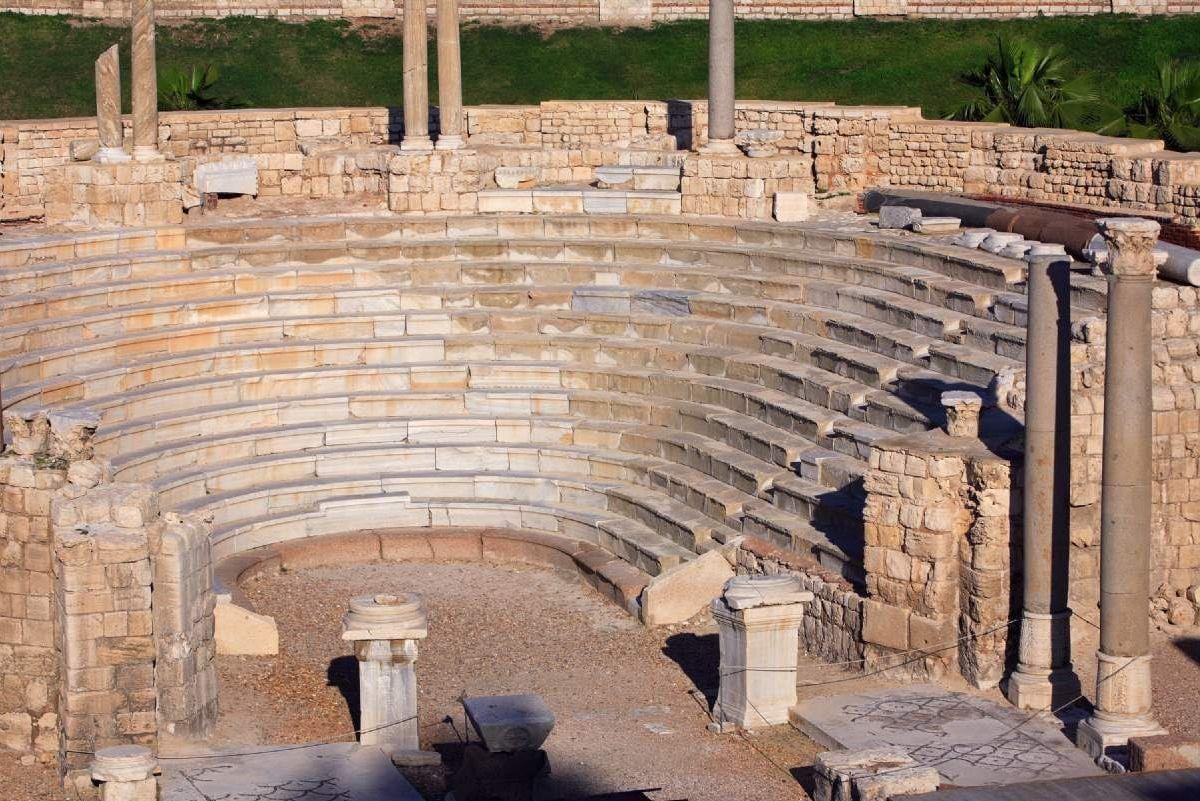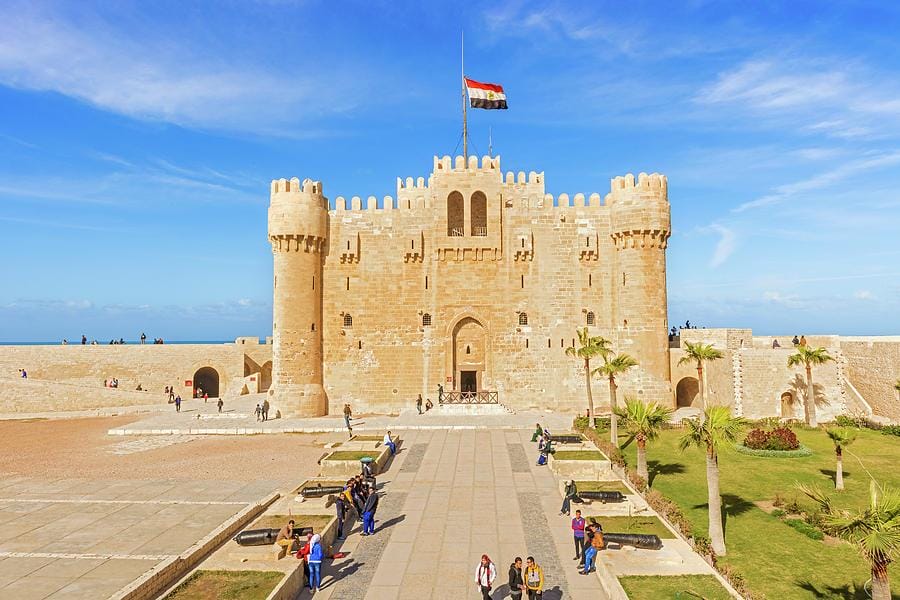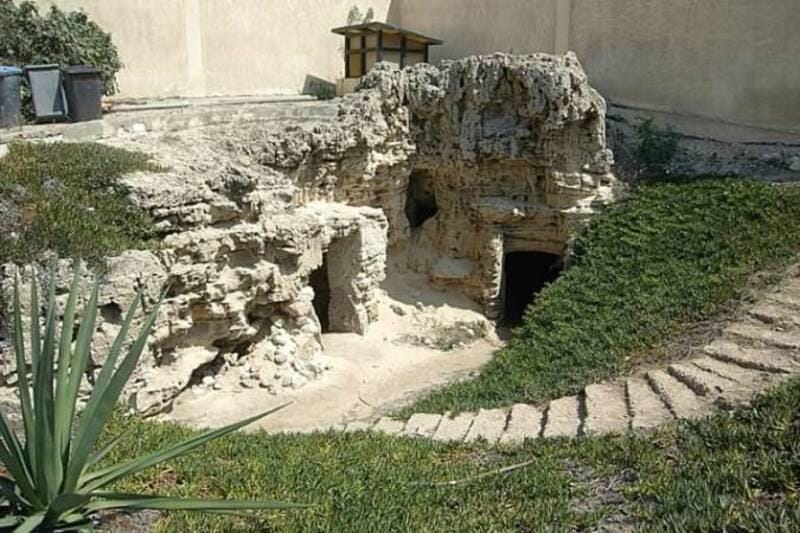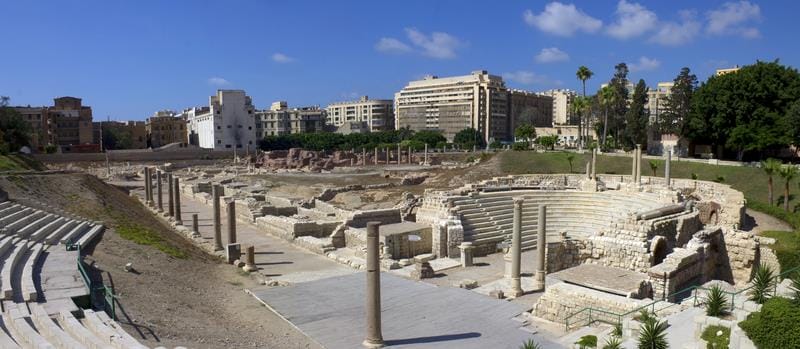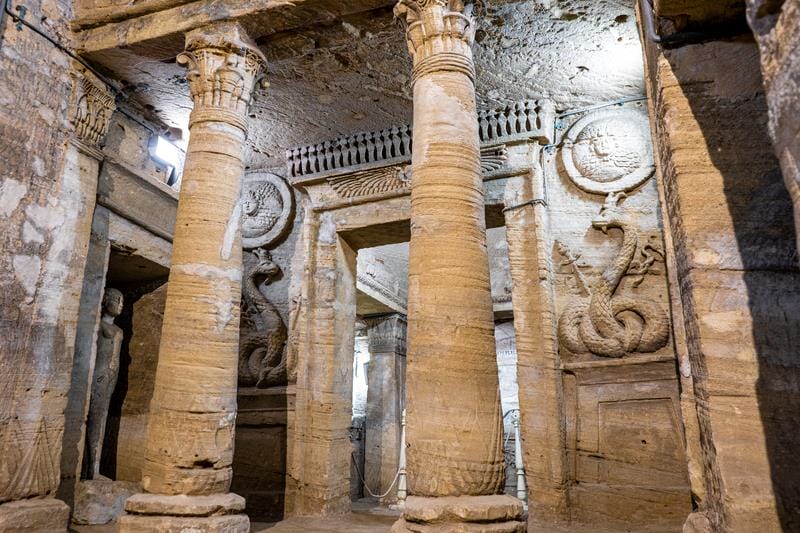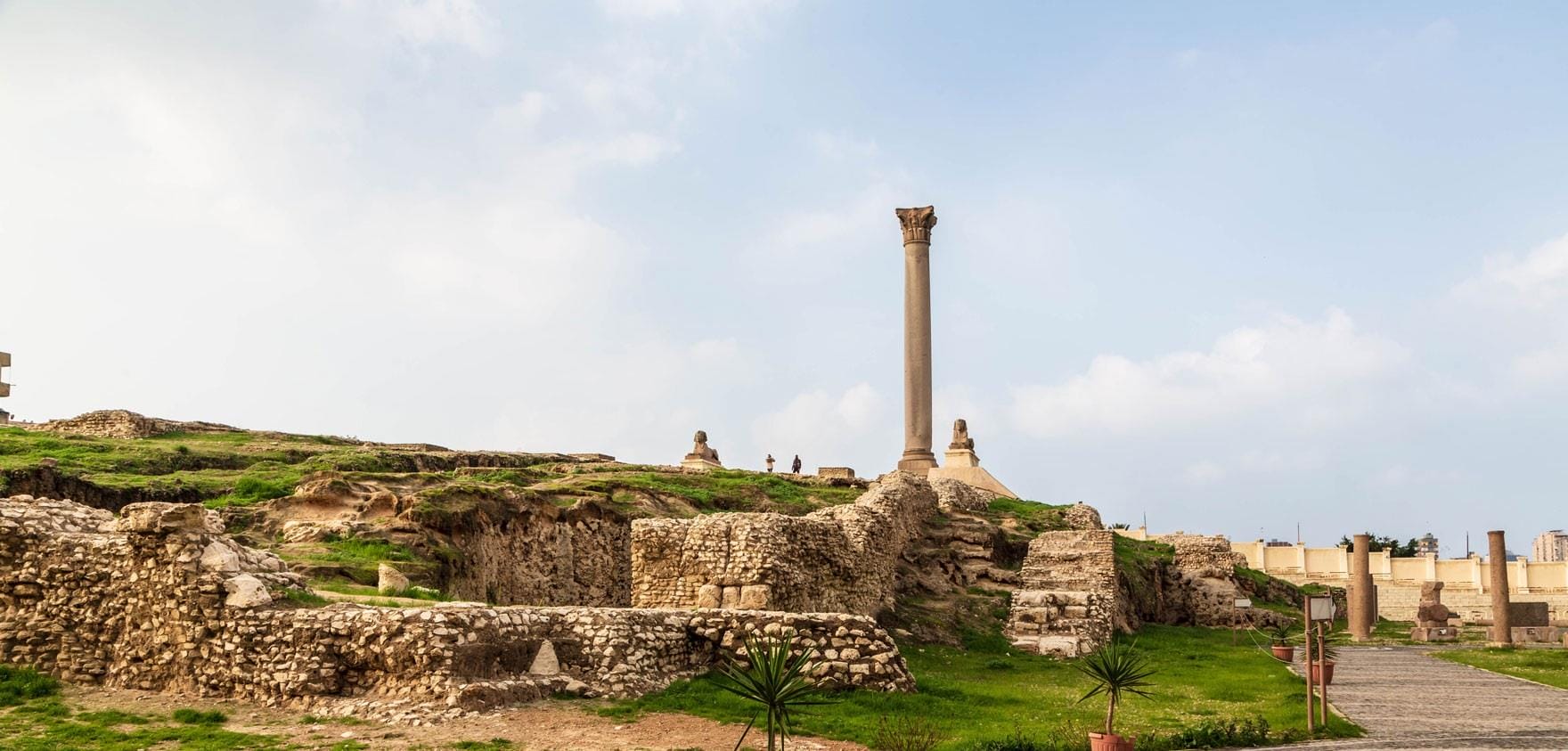Graeco-Roman Archaeological Sites & Antiquities
A magical glimpse into the Alexandria of the past.
The Citadel of Qayitbay
Named after the Burji Mamluk Sultan Al-Ashraf Sayf al-Din Qayitbay, the Citadel of Qayitbay was built in the 15th century to protect the coastal city from external attacks. Considered to be one of the most important defensive strongholds along the Mediterranean, this fortress underwent a series of fortifications and renovations over the course of its history designed to keep enemies at bay. The citadel was built on the site of one of the Seven Wonders of the Ancient world: the legendary Lighthouse of Alexandria (which is commemorated on Alexandria’s official two-toned blue and yellow flag). The citadel, which no longer serves any military function, has become a popular tourist attraction due to its picturesque structure and proximity to the bright blue Mediterranean Sea.
Al-Anfoushi Tombs
Discovered in 1901 AD, Al-Anfoushi Tombs (also known as the Necropolis of Al-Anfoushi) give visitors a close look at ancient Ptolemaic funerary practices. Comprising five funerary structures, these tombs, decorated with exquisite depictions of popular Egyptian gods, are one of the most historically significant cemeteries in Alexandria.
Kom al-Dikka Roman Theater
Located in the heart of Alexandria, the remarkably preserved Roman amphitheater in Kom al-Dikka will instantly transport you back to Greco-Roman times. Kom al-Dikka (which translates to “mound of rubble”) was once home to the affluent citizens of Alexandria, and the theater—with its accompanying public baths, lecture halls, and mosaic-adorned villa—is a surviving testament to the richness of ancient Alexandrian culture and history. Take a stroll through these magnificent ruins and picture the bustling activity that once took place there: enchanting music, intellectual discussions, and bright sunlight spilling onto the floors of the private “Villa of Birds,” illuminating the wonderful bird motif mosaics. The Roman amphitheater in Kom al-Dikka will give you a fascinating glimpse into the Alexandria that existed many centuries ago!
The Catacombs of Kom al-Shuqafa
Descending a stone spiral staircase to enter an eerily lit necropolis might seem like a daunting prospect, but there’s nothing at all frightening about the ancient Roman catacombs of Kom al-Shuqafa (which translates to “mound of shards”). This archaeological site, considered to be one of the Seven Wonders of the Middle Ages, provides a fascinating insight into ancient funerary rites and practices. The catacombs consist of a number of tombs, statues, and archaeological objects with detailed, intricate designs and paintings that combine the Pharaonic funerary cult with Hellenistic and early Imperial Roman influences.
Pompey's Pillar
Despite its name, Pompey’s Pillar bears no association with the Roman general and statesman Pompey. Instead, an inscription on this magnificent 28-meter red Aswan granite column is dedicated to the Roman Emperor Diocletian. The height and width of this Corinthian pillar render it one of the largest ancient monolithic columns ever built. It stands on the site of what was once the famed Serapeum of Alexandria, an ancient Greek temple dedicated to the Greco-Egyptian deity Serapis, the protector of Alexandria. Some of the ruins of this ancient temple remain at the site of the pillar, bearing vestiges of rich history.
Don’t Miss
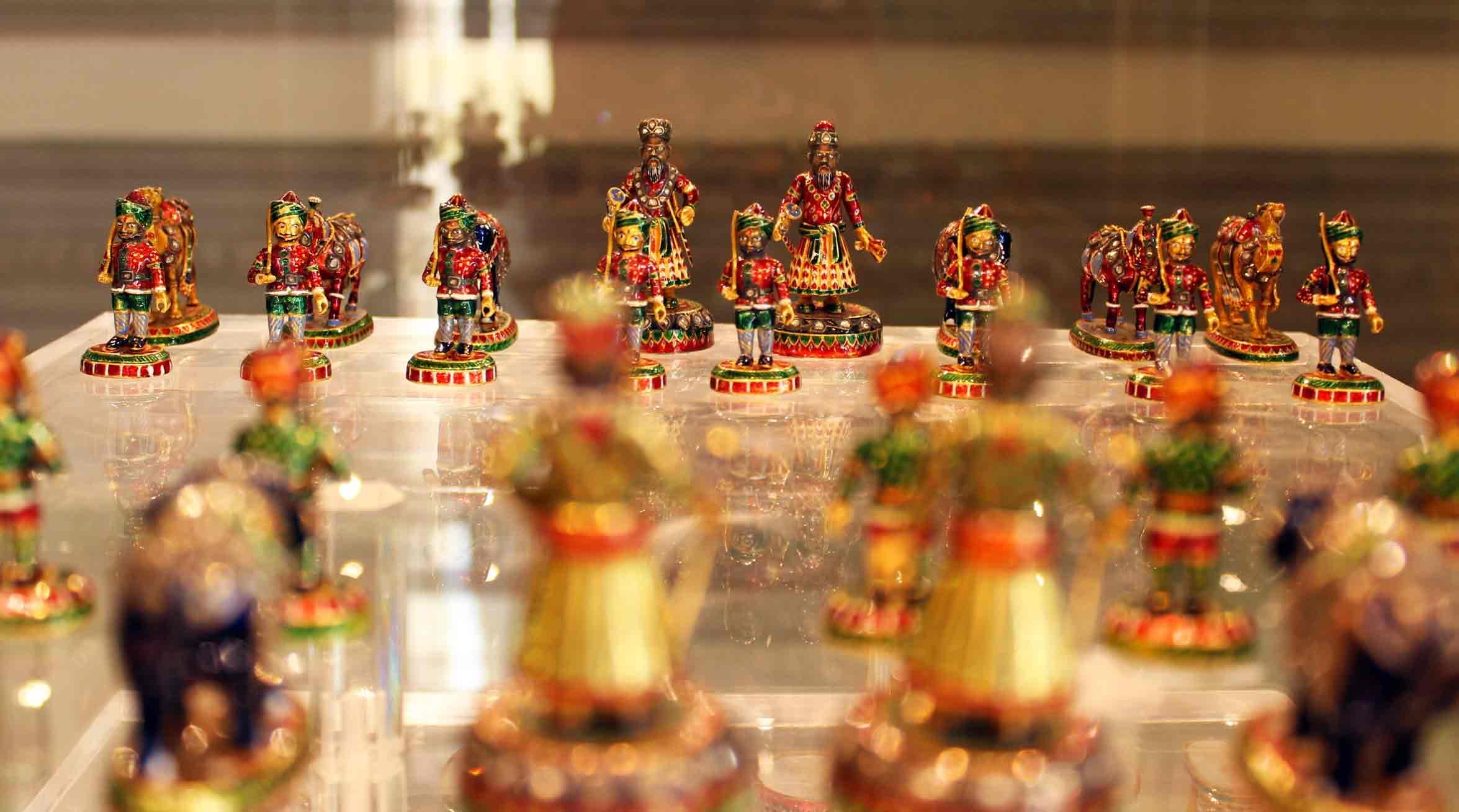
The Royal Jewelry Museum
Step into the tranquil halls of this lavishly decorated two-story villa where you can spend an afternoon gazing at magnificent treasures once owned by the Egyptian royal family. An ivory elephant statuette inlaid with precious stones, intricately designed gold pocket watches, delicate tea sets embossed with exquisite royal monograms, and spectacular swords are among the collections on display.
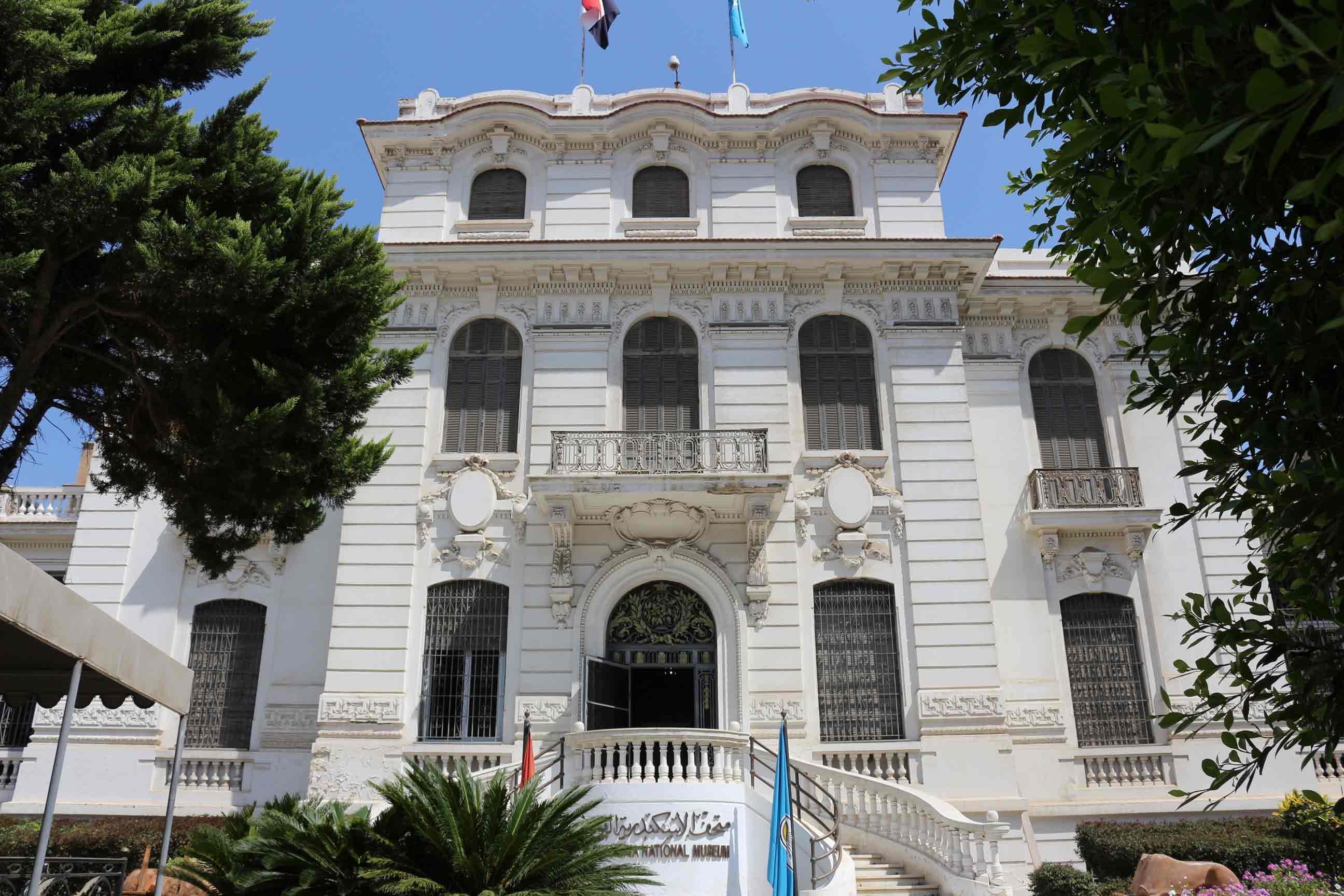
The National Museum of Alexandria
Trace Alexandria’s rich history through the fascinating collections on display at the National Museum of Alexandria, a charming, three-story, Italian-style mansion, once home to the US Consulate. The museum houses over 1,800 artifacts from the Pharaonic, Greek, Roman, Coptic, and Islamic civilizations.
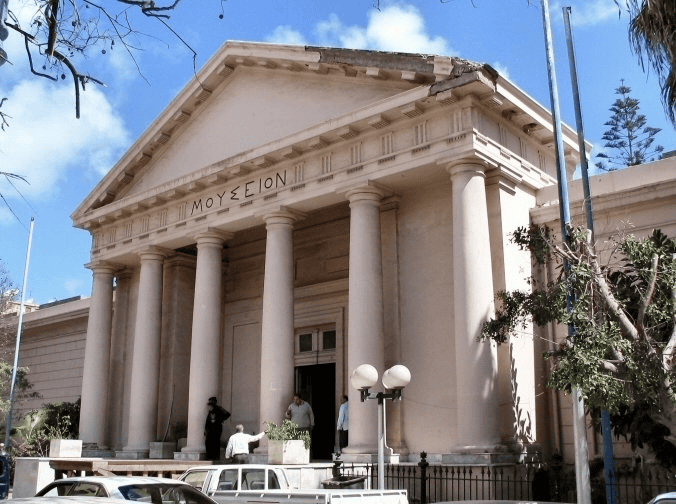
The Greco-Roman Museum
Offers a fascinating glimpse into Egypt’s Greco-Roman past. This popular Alexandria landmark has undergone a series of renovations and will be reopened soon for visitors from around the world.
